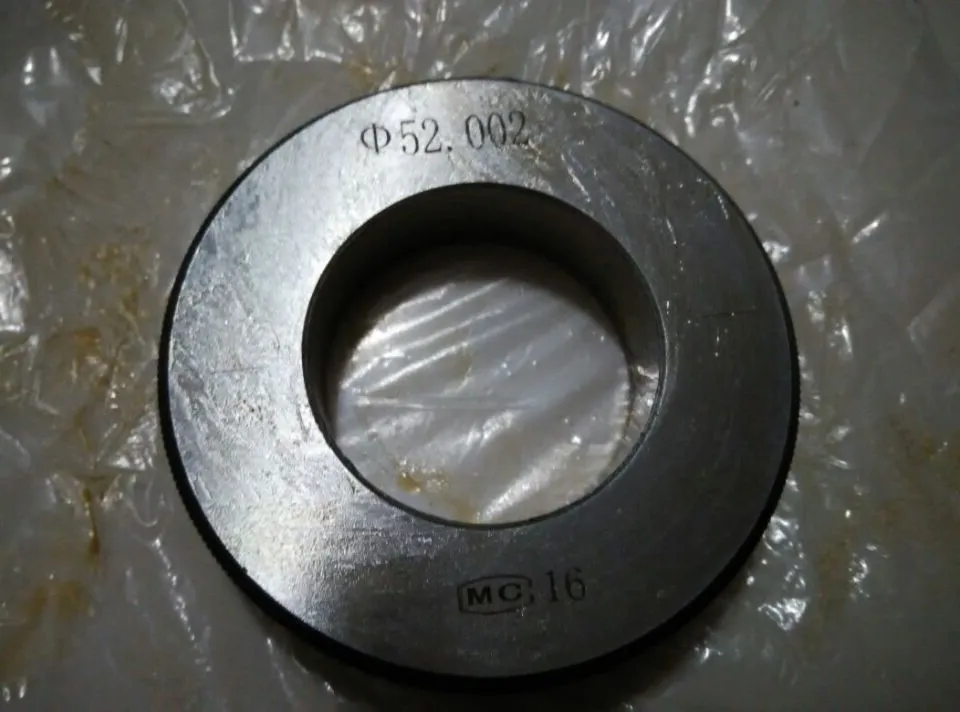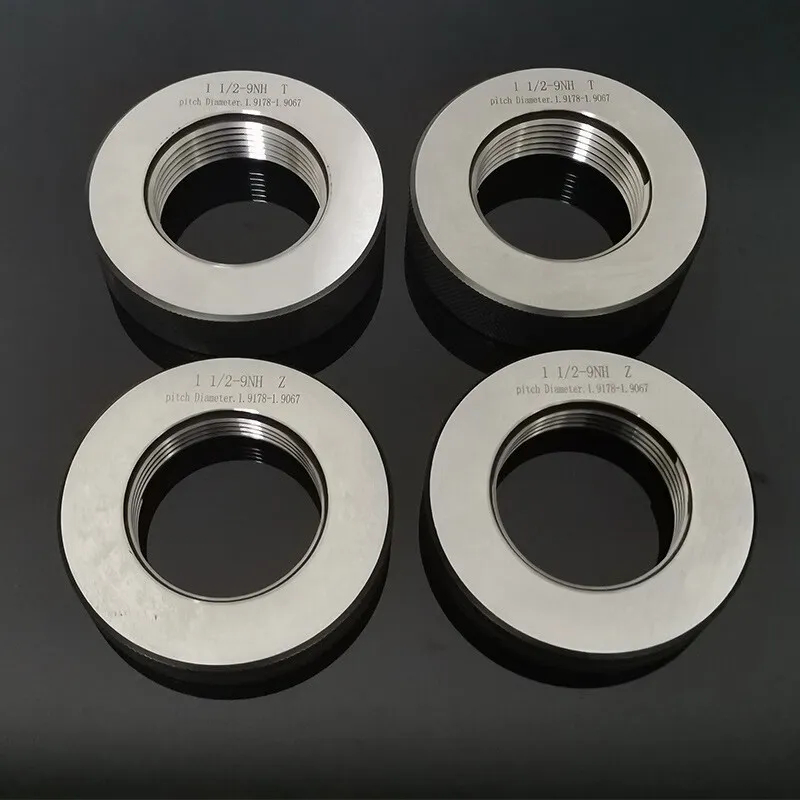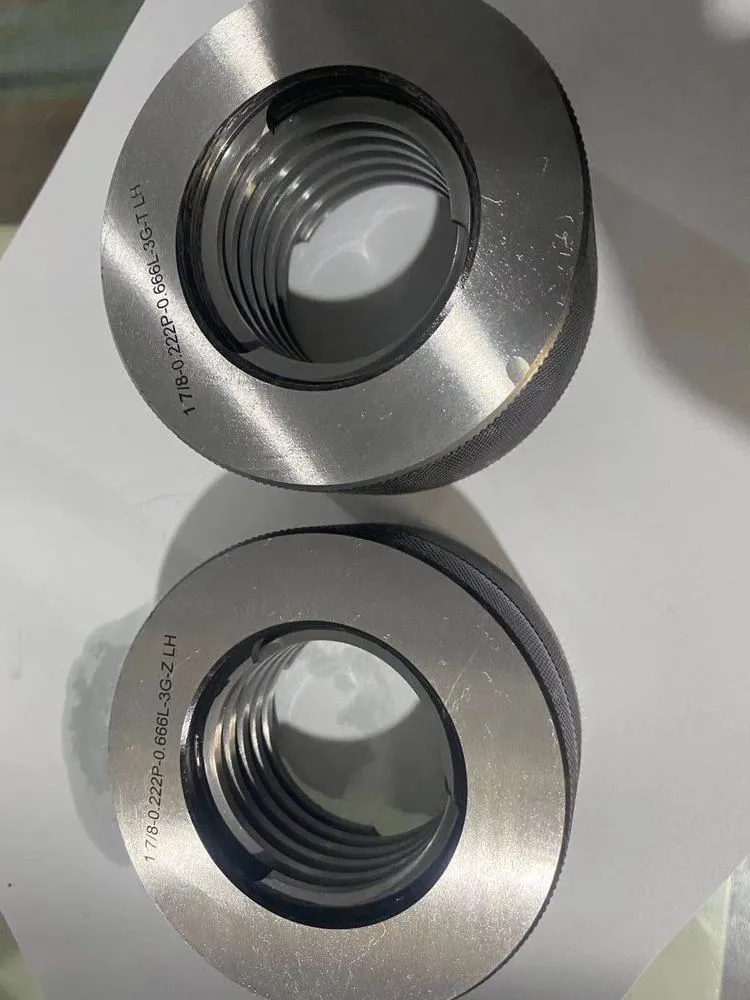May . 29, 2025 16:45 Laghachi na ndepụta
Master Ring Gage Calibration and Ensuring Traceability and Compliance in Metrology Labs
Precision measurement lies at the heart of metrology, and master ring gages serve as the cornerstone of calibration systems. These tools ensure traceability to international standards while maintaining compliance with stringent quality frameworks. This article explores the interplay between specialized tools like custom ring gages, ring gauge sets, and metal ring gauges, alongside the principles of dimensional inspection using gauge meant ring methodologies. From material science to calibration protocols, we dissect the practices that uphold measurement integrity in labs worldwide.

The Role of Master Ring Gages in Metrological Traceability
A master ring gage acts as the primary reference standard in calibration workflows. Crafted from ultra-stable materials such as hardened stainless steel or tungsten carbide, these gages undergo rigorous certification to align with national or international measurement standards. Their precision ensures that working ring gauges—used daily in manufacturing—retain accuracy over time. Traceability is achieved through documented calibration chains, linking every measurement back to a recognized authority like NIST or ISO.
Environmental controls are critical during calibration. Temperature fluctuations as small as 1°C can induce micron-level dimensional shifts in metal ring gauges, necessitating climate-controlled lab spaces. Additionally, surface finish quality—often polished to a mirror-like gloss—reduces friction during measurements and minimizes wear. Compliance demands regular recalibration of master ring gages to account for gradual material fatigue or micro-abrasions invisible to the naked eye. Modern labs employ laser interferometry or coordinate measuring machines (CMMs) to validate these standards, ensuring deviations remain within ISO 17025 thresholds.

Custom Ring Gages for Specialized Applications
When standard gauges fall short, custom ring gages provide tailored solutions. These tools are designed for unique part geometries, such as non-circular bores or tapered components, common in aerospace or medical device manufacturing. Materials like corrosion-resistant stainless steel or lightweight titanium are selected based on operational demands. For instance, a custom ring gage used in semiconductor fabrication might incorporate non-magnetic alloys to avoid interference with sensitive components.
The design process for custom ring gages often involves 3D modeling and finite element analysis (FEA) to predict thermal or mechanical stress. Post-machining, these gauges undergo stress-relief treatments to stabilize their structure. In sectors like energy or defense, where parts operate under extreme pressures, custom ring gages may feature reinforced edges or hybrid material layers to prevent deformation. Collaboration between metrology engineers and end-users ensures these tools meet both functional and regulatory needs without over-engineering.

Ring Gauge Sets: Versatility in Calibration Systems
A comprehensive ring gauge set streamlines calibration across diverse applications. These sets include multiple gauges with incremental diameters, enabling labs to verify parts across tolerance ranges. Materials vary within sets: carbide gauges suit high-wear environments, while steel options balance affordability and performance.
A well-curated ring gauge set also accounts for industry-specific requirements. Automotive labs, for example, prioritize gauges with tight tolerances for engine components, while construction equipment manufacturers might focus on ruggedized designs. Advanced sets incorporate RFID tags or QR codes for digital tracking, linking each gauge to its calibration history. Proper storage—using protective cases and climate-controlled cabinets—preserves their integrity, reducing the risk of dimensional drift due to environmental factors. Periodic audits of ring gauge sets ensure no member of the set exceeds wear limits, maintaining system-wide consistency.
Metal Ring Gauge Durability in Demanding Environments
The longevity of a metal ring gauge hinges on material science. Stainless steel remains popular for its balance of hardness and machinability, while tungsten carbide excels in high-abrasion settings. Titanium, though costlier, offers unmatched strength-to-weight ratios for portable applications.
Surface treatments play a pivotal role in durability. Electroless nickel plating, for instance, enhances wear resistance and reduces friction during inspections. In corrosive environments, alloys with chromium or molybdenum additives form passive oxide layers that prevent pitting. For high-temperature applications, heat-treated steels retain dimensional stability even at 500°C. A metal ring gauge’s lifespan directly impacts calibration costs, making material choice a critical consideration for lab sustainability. Labs often conduct failure mode analysis to identify wear patterns, informing future material selections.
FAQS:Metal Ring Gauge Calibration
How does a gauge meant ring differ from a standard ring gauge?
A gauge meant ring refers to a tool specifically designed for go/no-go testing. Unlike reference-grade master ring gages, these are used for rapid pass/fail assessments in production lines. Their tolerances align with part specifications, and materials like case-hardened steel ensure they withstand repetitive use.
Why are custom ring gages essential for non-standard components?
Standard gauges cannot accommodate irregular geometries or specialized tolerances. Custom ring gages are machined to match exact part dimensions, ensuring precise verification without compromising measurement integrity. They also mitigate the risk of false rejects in high-precision industries.
What defines a high-quality ring gauge set?
A robust ring gauge set includes gauges with certified tolerances, materials suited to their intended use, and traceable documentation. Proper organization—such as labeled storage—minimizes handling errors. Some sets include redundancy for critical sizes to account for wear.
How often should a master ring gage be recalibrated?
Recalibration intervals depend on usage frequency and environmental conditions. Most labs follow annual cycles, but high-throughput facilities may shorten this to six months. Statistical process control (SPC) data can help optimize schedules.
Which metal ring gauge material is ideal for high humidity?
Stainless steel with chromium content resists oxidation in humid settings. For extreme conditions, titanium or coated carbide provides additional protection against corrosion. Regular cleaning with anhydrous solvents further prolongs gauge life.
By integrating master ring gages, custom solutions, and durable materials, metrology labs uphold the precision and reliability demanded by modern industries. Through rigorous calibration protocols, advanced material science, and adaptive design philosophies, these practices ensure compliance and foster trust in measurement outcomes. As technology evolves, so too must the tools and methodologies that define metrological excellence.
-
Why the Right Angle Ruler Reigns in MetalworkingAkụkọJul.21,2025
-
The Enduring Allure of Granite Boxes in Modern InteriorsAkụkọJul.21,2025
-
The Digital Gauging Revolution: Reshaping Thread Rings Inspection's FutureAkụkọJul.21,2025
-
How Modern Inspection Platforms Transcend Surface MeasurementAkụkọJul.21,2025
-
How Customization Drives Wholesale Success in Parallel RulersAkụkọJul.21,2025
-
Fortifying Permanent Steel Ground Anchors Against Corrosion's OnslaughtAkụkọJul.21,2025
Ngwaahịa ndị emetụtara









